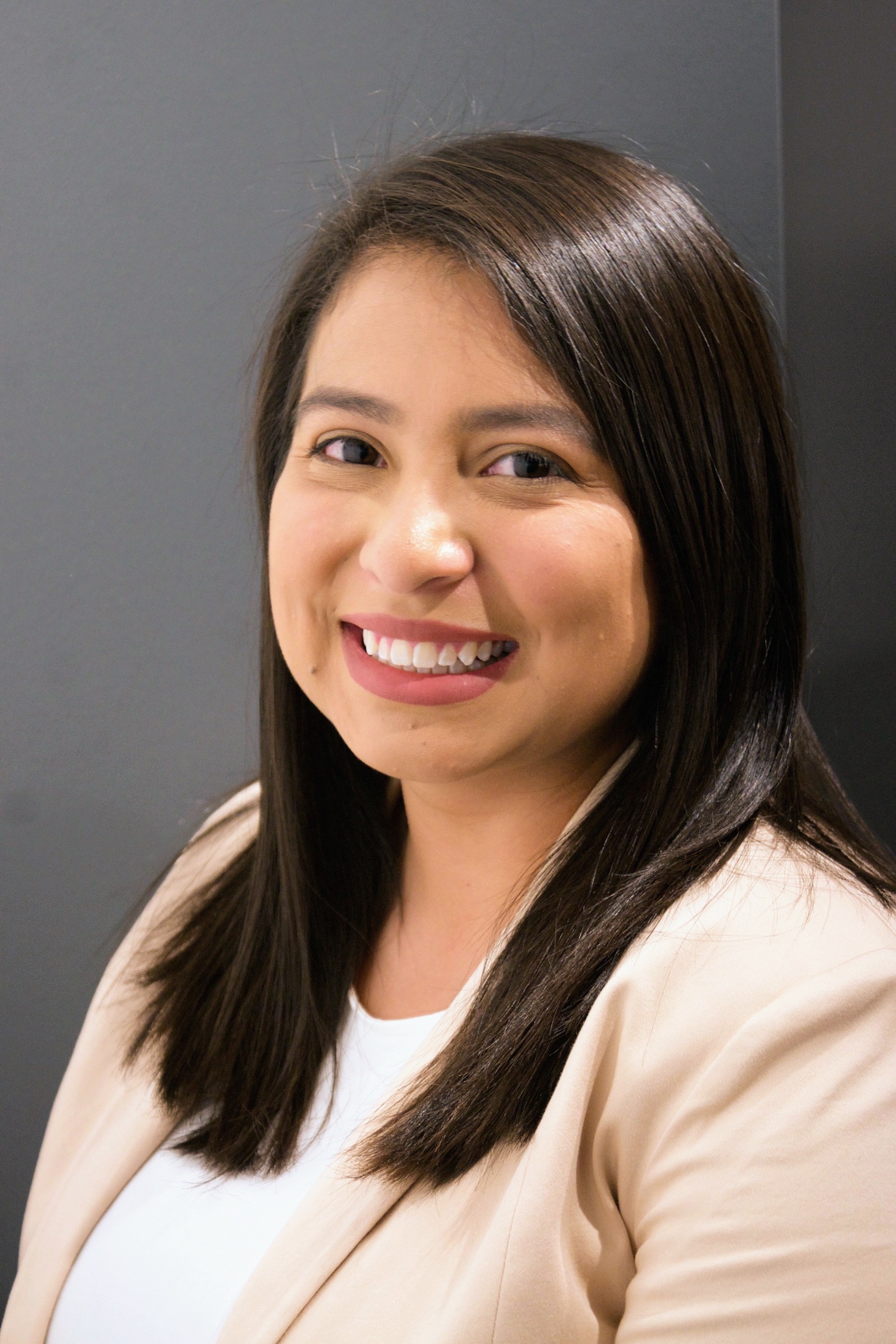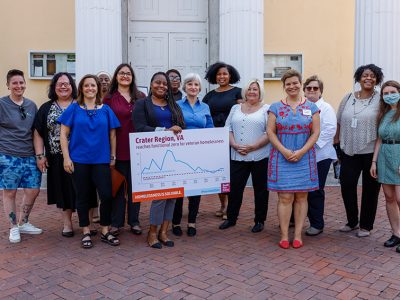In December 2018, the Built for Zero community of Lake County/North Chicago, Illinois, achieved functional zero for veteran homelessness, which means that fewer veterans are experiencing homelessness than can be routinely housed in a month. As they continue to sustain that milestone and drive reductions in homelessness for other populations, the community has modeled a discipline at the heart of the Built for Zero methodology: quality improvement.
As a science initially used to improve the quality of outcomes of other sectors, like manufacturing and health care systems, quality improvement is based on the understanding that outcomes are the product of systems, and that improving outcomes requires changes to the system. Lake County’s high-functioning team regularly looks for both small and large ways to continually strengthen their system. Even if an idea that is tested, also referred to as a change idea, doesn’t render the expected results, quality improvement science teaches that the information gained is still valuable.
As Elise Topazian, the team’s System Improvement Advisor at Built for Zero, commented: “They are all incredible exemplars of the value of ‘failing forward’ and courageous exploration into change ideas that help their system continuously improve.”
What is quality improvement?
There are five ways in which quality improvement has shaped local teams’ efforts to reduce homelessness. One is to establish a shared aim, and another is to build a nimble, integrated team that coordinates around it. These aims should seem just out of reach and more ambitious than ones that have been set before.
“You take a step back and just ask why, and look for ways to improve it on the micro and macro level.”
Erica O’NEill
A requirement of improvement science is the ability to capture, track, and understand data over time. Using their real-time, by-name data, communities maintain a comprehensive and person-specific understanding of who is experiencing homelessness at any given time. The team uses this data to generate a clear set of strategies, or “improvement ideas,” for how to strengthen their system, and they test those ideas in real-life environments, learning and evaluating their results.
This kind of learning benefits not just the immediate stakeholders. Improvement science holds that “knowledge not shared is wasted,” meaning that processes should be in place for capturing and sharing what is learned from these tests of change — whether they are successful or not — to accelerate progress.
For Yareli Salgado, Continuum of Care Coordinator at Lake County, quality improvement means enacting little changes that can add up. “So instead of trying to make one big change that you might get a lot of resistance to, it’s incremental changes that’ll still get you to that big end goal that you want, but are more achievable in the small bursts,” she said.
Understanding the basics of quality improvement and integrating it into their daily work has been an evolving process for the Lake County veteran team. Erica O’Neill, a social worker at the Captain James A. Lovell Federal Health Care Center, a newer member of the team, came on board after they reached functional zero for veteran homelessness in a role that has helped the community sustain functional zero. She acknowledges that weaving in quality improvement in her day-to-day work has been challenging at times, but taking on this complex process has changed how she approaches it.
“It’s taught me to ask why,” she said. “Sometimes we get to work and we just go through the motions — that’s the process and that’s the way things are done. And you don’t think as to why, because that’s just the way it is. And so, you do take a step back and just ask why, and look for ways to improve it on the micro and macro level.”

“Instead of trying to make one big change that you might get a lot of resistance to, it’s incremental changes that’ll still get you to that big end goal that you want, but are more achievable in the small bursts.”
— Yareli Salgado
“Test it by Tuesday“
Having a robust foundation of real-time, by-name data has been crucial to Lake County’s quality improvement efforts.
“Coming from the data [perspective], it’s exciting that we have the tools to be able to tell whether the change we’ve made is working,” Salgado said.
And because they have quality data collected in real-time, the team can track a variety of tests of change over different periods. Salgado referenced a phrase she heard early on when exploring the discipline of quality improvement: “Test it by Tuesday.” The idea behind the saying is to figure out how to make a problem small enough to tackle in a week.
“It was hard to get into that mentality, but once you start to practice it and think of changes, something that doesn’t have to be big and scary, then like you start to get into the habit of it,” she said. “It was like training your brain to think smaller instead of bigger.”
“How did that go? Is that how we want it to be in the future? Is there something we could have done differently?”
yareli salgado
The Lake County team makes sure that they don’t skip out on the important but often overlooked piece of improvement science — learning and evaluation after each tested idea.
“Throughout my career, there’s been a lot of meetings and a lot of talking about things or planning for things, but then it makes sense to sit down and evaluate and think about how did that go? Is that how we want it to be in the future? Is there something we could have done differently?” Salgado explained.
“And so [it’s about] just coming to the realization that the amount of work you put into a meeting, you should also put in after a meeting to figure out how we can do it differently. What could have been tweaked? That has been a game-changer to shift not just forward thinking, but evaluating.”
Lillie Prince, a social worker at the Captain James A. Lovell Federal Health Care Center, agrees. “Every change that you make is worth looking at, even if it seems very small, like a sign-in sheet for a walk-in center or a tracking spreadsheet,” she said. “Our changes can range from testing them for a day to a week to a quarter. The larger goals, the bigger the timeframe. And everybody has that kind of understanding — that we’re always open to suggestions, ideas, and testing things.”
A test of change to the coordinated entry system
The Lake County team put their knowledge of quality improvement science into practice because of the changes that the Covid-19 pandemic brought to their coordinated entry system. During the pandemic, there was an influx of new vouchers that allowed veterans to stay in motels to de-congregate shelters. With the increased availability of these vouchers, more homeless service providers were working with veterans, but they were not always trained in or utilizing the coordinated entry system.
To address this, the Lake County team began to develop change ideas to make sure that all veterans experiencing homelessness in their community were included on their by-name list. They held refresher trainings for the organizations that served as entry points into the homeless response system so staff would know when and how to add someone to the by-name list. Additionally, the team explored adding new entry points to ensure better coverage across the community and started to invite more people to their case conferencing meetings to better collaborate on available resources.
As a result, any veteran experiencing homelessness who came to any point of entry for assistance would also be added to the county’s by-name list. Not only would this provide the veteran access to additional resources, but it also ensured that the by-name data was truly accurate.
Once their entry point providers received appropriate training and access, the Lake County team created a feedback loop by keeping a close watch on their by-name list to ensure veterans were actually being added to it. According to Salgado, this test of change rendered positive results.
As she explained, “We started seeing more veterans added to our by-name list along with increased communications between veteran partners and the Lovell Federal Health Care Center’s Walk-in Center.”
Failing forward
As happens in improvement science, not all tests of change have been “successes” in the traditional sense. For example, Lovell Federal Health Care Center, an integrated federal health care center between the Department of Defense and VA, has a residential on-site program that provides a 90-day communal, sober living environment for up to 60 veteran residents. This domiciliary care program offers opportunities for residents to meet with providers during their stay to focus on obtaining permanent housing.
The veteran team wanted to explore why their real-time data was showing that some residents were staying longer in the program and not moving on to permanent housing. One potential cause was that residents were having difficulty finding transportation to visit available rental units. To address this, they scheduled regular van transportation from the program building to take residents around to look at available rental units.
“It didn’t work out like we thought it did,” Salgado said. Residents weren’t always able to coordinate timing to make it to the van and overall weren’t utilizing the new service.
Nonetheless, the team gleaned important knowledge from this test of change. It ended up that residents didn’t need support physically visiting the units, but rather additional help from their case managers — which the team then offered as a result.
Staying nimble
As the wider Lake County community looks to reduce and end homelessness for other populations, the veteran team plans to continue sustaining their functional zero achievement. They also know there is always more to be learned, from efforts within their own community and the wider Built for Zero movement.
“You really have to stay nimble and things are continually shifting,” Dulski said. “So in my mind, quality improvement means paying attention to the current state of affairs in our field, so that we know what other communities are trying, [and] how they are addressing some of the issues that we face.”




